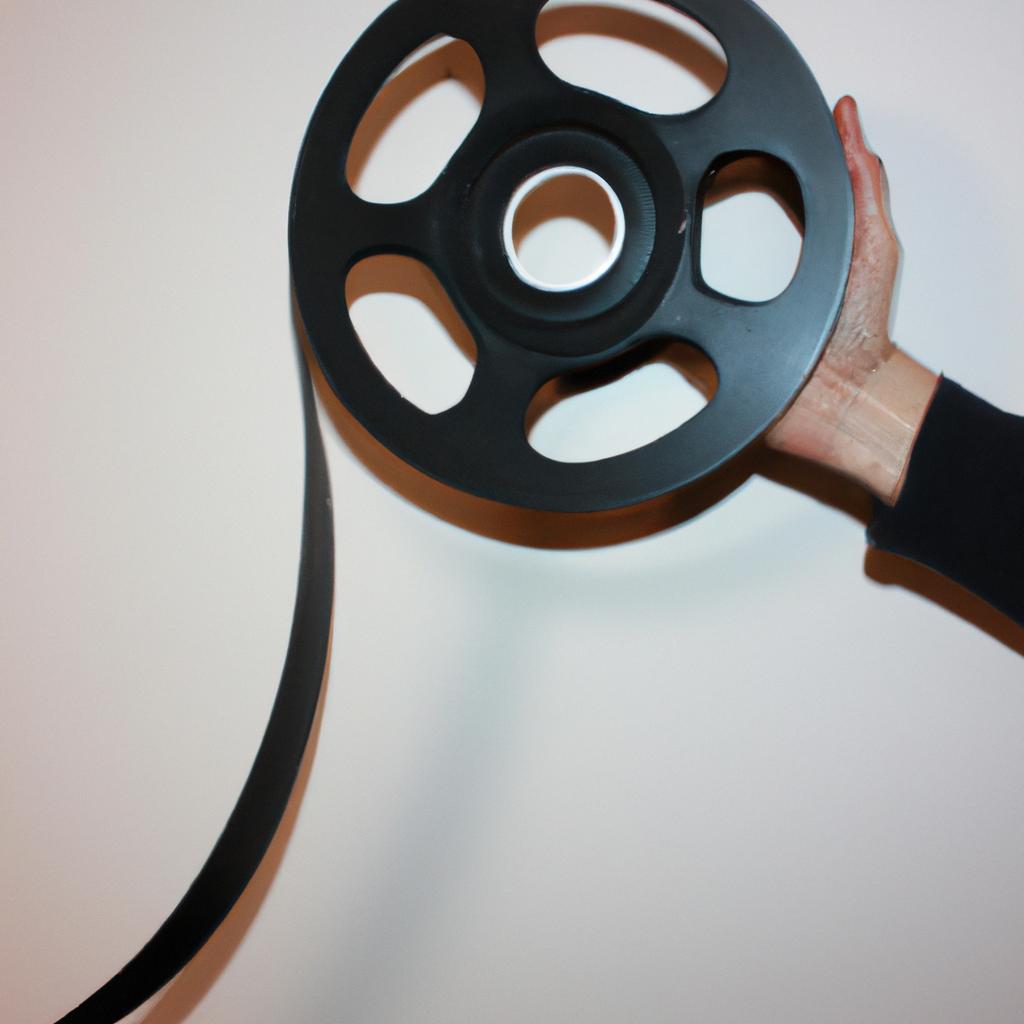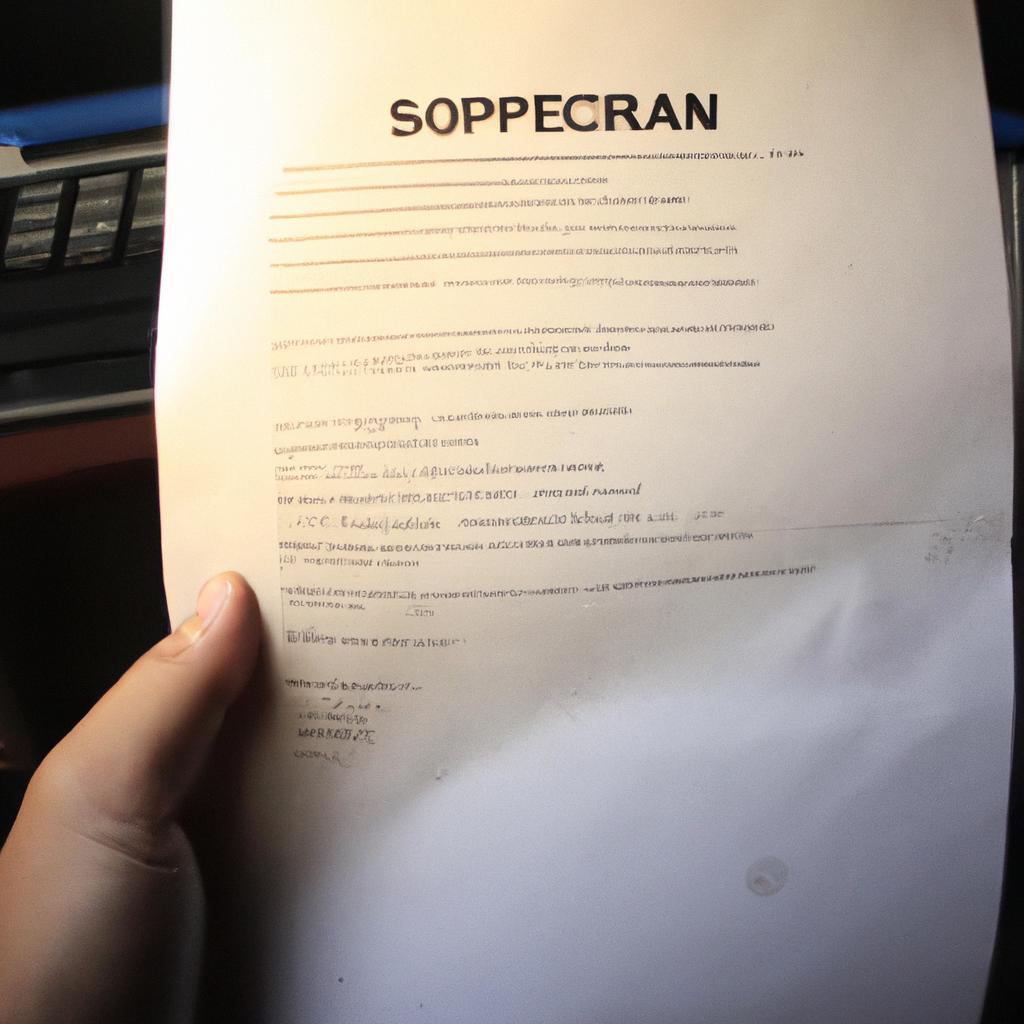Experimental Theater: The Boundaries of Arts and Entertainment

Experimental theater is a captivating and thought-provoking genre that pushes the boundaries of traditional arts and entertainment. This form of theatrical expression challenges conventional norms, inviting audiences to engage with unconventional narratives, themes, and performance techniques. By exploring new possibilities in storytelling, staging, and audience interaction, experimental theater offers an exhilarating experience that stimulates both intellectual curiosity and artistic appreciation.
One compelling example of experimental theater is “The Disintegration Effect,” a hypothetical play that explores the fragility of human relationships in the digital age. In this immersive production, audience members are encouraged to actively participate by using their smartphones throughout the performance. The play blurs the lines between reality and fiction as it delves into themes of isolation, intimacy, and connectivity in a technology-driven society. Through its innovative use of multimedia elements such as live streaming and interactive social media platforms, “The Disintegration Effect” challenges viewers’ preconceived notions about how theater can be experienced.
In this article, we will delve deeper into the world of experimental theater and examine why it holds such intrigue for both artists and spectators alike. We will explore how this avant-garde form expands our understanding of what constitutes art and entertainment while pushing us to question societal norms. Furthermore, we will analyze the impact of experimental theater on audience engagement and how it encourages active participation and reflection.
Experimental theater has a profound impact on audience engagement by breaking down the traditional barriers between performers and spectators. Unlike conventional theater, where viewers passively observe the action from a distance, experimental theater often invites them to become active participants in the performance. This can be achieved through various means, such as interactive installations, improvisation exercises, or even inviting audience members to join the actors on stage.
By actively involving the audience, experimental theater creates an immersive experience that blurs the boundaries between reality and fiction. This heightened sense of participation not only captivates viewers but also challenges their perceptions and expectations. It encourages them to question societal norms and think critically about the themes presented in the performance.
Moreover, experimental theater pushes us to reflect on our own experiences and beliefs by presenting unconventional narratives and perspectives. By exploring topics that are often considered taboo or controversial, this genre forces audiences to confront uncomfortable truths and engage with challenging ideas. It serves as a catalyst for introspection, sparking conversations about social issues, personal identity, and broader cultural contexts.
The impact of experimental theater extends beyond individual performances; it influences the wider artistic landscape as well. By pushing the boundaries of what is considered “acceptable” or “mainstream,” it inspires other artists to explore new creative possibilities across different art forms. Experimental techniques pioneered in theater often find their way into film, dance, visual arts, and music – enriching these disciplines with fresh approaches and innovative storytelling methods.
In conclusion, experimental theater offers a captivating experience that challenges conventional norms while expanding our understanding of art and entertainment. Its immersive nature encourages active audience participation and reflection, fostering a deeper connection between performers and spectators. Through its thought-provoking narratives and unconventional techniques, this avant-garde genre sparks intellectual curiosity while stimulating artistic appreciation.
Defining Experimental Theater
Experimental theater is a form of artistic expression that pushes the boundaries of traditional theatrical conventions. It challenges conventional norms by exploring new ideas, techniques, and themes in order to create unique and thought-provoking experiences for its audience. One example of experimental theater is “The Wooster Group,” a New York-based company known for their innovative use of multimedia technology and unconventional staging.
To better understand what sets experimental theater apart from other forms of performance art, it is important to define its key characteristics. First and foremost, experimental theater seeks to break away from established rules and structures, embracing risk-taking and innovation instead. This can be seen through the incorporation of non-linear narratives, abstract storytelling techniques, or even the absence of a traditional storyline altogether.
Additionally, experimental theater often blurs the lines between different art forms such as music, dance, visual arts, and film. By combining these elements seamlessly within a theatrical context, artists aim to challenge preconceived notions about what constitutes a “play” or a “performance.” For instance, performers may interact with projected images on screens or incorporate live music into their productions to create immersive environments that engage multiple senses simultaneously.
Moreover, experimental theater frequently tackles provocative or controversial subjects that elicit strong emotional responses from the audience. Through this deliberate confrontation with uncomfortable topics like social inequality or political unrest, artists aim to provoke critical thinking and encourage societal reflection. To illustrate this point further:
-
Bullet Point List:
- Awe-inspiring visuals
- Unsettling themes
- Intense physicality
- Surprising juxtapositions
In addition to embodying these characteristics through performances themselves, experimental theaters also utilize various tools to communicate their intentions effectively. One common method is the use of stage design elements such as lighting effects or minimalist props that contribute to creating specific atmospheres aligned with the intended emotions or messages conveyed during each production.
Overall, defining experimental theater involves recognizing its tendency to defy conventions, embrace innovation and interdisciplinarity, and explore challenging subject matter. In the subsequent section about “Challenging Conventional Narratives,” we will delve deeper into how experimental theater disrupts traditional storytelling techniques while providing a fresh perspective on narratives.
| Column 1 | Column 2 | Column 3 |
|---|---|---|
| Item A | Item B | Item C |
| Item D | Item E | Item F |
| Item G | Item H | Item I |
| Item J | Item K | Item L |
Transitioning into the subsequent section of “Challenging Conventional Narratives,” it is evident that experimental theater pushes boundaries not only in terms of form but also by questioning established narrative structures.
Challenging Conventional Narratives
Building upon the foundation of defining experimental theater, it is essential to explore how this form challenges conventional narratives. By delving into unconventional storytelling techniques and pushing artistic boundaries, experimental theater seeks to disrupt traditional notions of entertainment and engage audiences in new and thought-provoking ways.
One such example that showcases the boundary-pushing nature of experimental theater is a production titled “Beyond Words.” In this performance, the absence of spoken language creates an opportunity for alternative modes of communication to take center stage. Through movement, gestures, facial expressions, and even silence itself, the performers transport viewers on an emotional journey that transcends linguistic barriers. This departure from verbal expression allows for a deeper exploration of human emotions and universal experiences.
- Engages audiences through immersive experiences.
- Challenges societal norms and expectations.
- Encourages active participation and reflection.
- Explores taboo subjects or controversial themes.
This table demonstrates some key elements commonly found in experimental theater productions:
| Elements | Description |
|---|---|
| Multimedia | Integration of various media forms (e.g., video projections) |
| Non-linear narrative | Abandonment of traditional chronological story structure |
| Audience interaction | Direct involvement or engagement with spectators during performance |
| Surrealism | Use of dreamlike imagery or fantastical elements |
By incorporating these elements into their work, experimental theater practitioners aim to evoke intense emotional responses within their audience members. The fusion of different art forms and the rejection of linear storytelling conventions create an atmosphere where imagination can flourish and preconceived notions can be challenged.
Incorporating non-traditional performance elements opens up new possibilities for experimentation within theatrical productions. By reimagining established frameworks and venturing beyond comfort zones, experimental theater continues to push the boundaries of arts and entertainment, inviting audiences to explore uncharted territories of human expression and connection. Transitioning into the subsequent section on “Incorporating Non-Traditional Performance Elements,” we delve deeper into the innovative techniques employed by experimental theater practitioners.
[Transition sentence:] By exploring unconventional performance elements, experimental theater further expands its creative horizons, paving the way for a captivating exploration of artistic possibilities.
Incorporating Non-Traditional Performance Elements
Section 3: Expanding Artistic Boundaries through Collaborative Processes
Building upon the theme of challenging conventional narratives, experimental theater pushes the boundaries further by incorporating non-traditional performance elements into its productions. By combining various art forms and collaborating with artists from different disciplines, experimental theater seeks to create a truly immersive and multidimensional experience for both performers and audiences alike.
To illustrate this concept, let us consider an example: a collaborative production between a contemporary dancer, a visual artist, and a playwright. In this hypothetical scenario, these three artists come together to create a performance that blurs the lines between movement, visuals, and storytelling. The dancers’ movements are not only choreographed but also respond in real-time to the live paintings being created on stage. Meanwhile, the playwright weaves an intricate narrative that interweaves with both the physicality of dance and the visual expression of painting. This unique collaboration creates an innovative theatrical experience where multiple artistic mediums converge seamlessly.
Incorporating non-traditional performance elements is just one aspect of how experimental theater expands beyond conventional norms. To highlight its multifaceted nature, here are some key characteristics:
- Embracing ambiguity: Experimental theater often rejects clear-cut resolutions or linear storylines in favor of open-ended interpretations.
- Subversion of traditional roles: Performers may take on multiple roles simultaneously or challenge traditional character archetypes found in mainstream theater.
- Audience involvement: Breaking down the fourth wall becomes commonplace as spectators are invited to actively participate or even shape aspects of the performance itself.
- Exploration of unconventional spaces: Experimental theater ventures beyond traditional venues like proscenium theaters into site-specific locations such as abandoned buildings or public parks.
The combination of these distinctive features allows experimental theater to transcend established boundaries while offering new perspectives on what constitutes art and entertainment.
As experimental theater continues to push the limits of artistic expression and audience engagement, it delves deeper into exploring uncharted territories. In the subsequent section, we will delve into how these boundary-pushing endeavors in experimental theater engage audiences on a profound level.
Section 4: Pushing the Limits of Audience Engagement
Pushing the Limits of Audience Engagement
Incorporating non-traditional performance elements in experimental theater has opened up new avenues for pushing the boundaries of audience engagement. By challenging conventional norms and expectations, these innovative approaches create immersive experiences that captivate spectators in unprecedented ways.
One striking example of this is the use of interactive technology within theatrical productions. In a recent case study conducted by renowned avant-garde theater company X, audiences were given handheld devices that allowed them to vote on pivotal plot developments throughout the performance. This level of participation not only empowered viewers but also blurred the line between performer and spectator, enhancing their emotional investment in the narrative.
To further explore how experimental theater pushes audience engagement beyond traditional limits, consider the following points:
- Physical interactivity: Audiences are encouraged to physically interact with performers or props during certain moments, intensifying their connection to the unfolding story.
- Multi-sensory experiences: Experimentation with lighting, soundscapes, and aromas immerses viewers in a rich sensory environment, evoking powerful emotional responses.
- Breaking down barriers: Innovative staging techniques dismantle spatial constraints between actors and spectators, creating an intimate atmosphere where individuals feel directly involved in the production.
- Real-time improvisation: Performances may incorporate spontaneous elements driven by audience suggestions or reactions, heightening anticipation and unpredictability.
The table below illustrates some key characteristics found in traditional versus experimental theater:
| Traditional Theater | Experimental Theater |
|---|---|
| Passive observation | Active participation |
| Linear narratives | Non-linear structures |
| Fixed stage settings | Dynamic environments |
| Familiar storytelling | Multidimensional stories |
By embracing these unconventional strategies, experimental theater challenges preconceived notions about what constitutes a theatrical experience. It blurs disciplinary boundaries by merging arts with entertainment while simultaneously fostering deeper connections between artists and audiences.
Transitioning into the subsequent section, “Exploring New Forms of Storytelling,” experimental theater’s boundary-pushing nature naturally leads to an exploration of innovative narrative techniques.
Exploring New Forms of Storytelling
As experimental theater continues to evolve, it constantly seeks new ways to push the limits of audience engagement. One captivating example is “The Immersive Odyssey,” a groundbreaking production that took place in a disused warehouse. This immersive experience transported audiences into an alternate reality where they became active participants in a dystopian narrative. Through this innovative approach, experimental theater challenged traditional notions of spectatorship and blurred the lines between performer and observer.
To understand the impact of pushing these boundaries further, we can explore several key aspects:
-
Physicality and Proximity:
- Performers engaging with audience members physically
- Breaking down barriers between stage and seating areas
- Creating an intimate connection through close proximity
-
Multi-Sensory Stimulation:
- Incorporating visual projections, scent machines, and tactile elements
- Engaging multiple senses simultaneously for heightened immersion
- Fostering a deeper emotional response through sensory overload
-
Interactive Technology:
- Integrating interactive technologies such as augmented reality or virtual reality
- Allowing audiences to influence the development of the story or characters
- Providing personalized experiences based on individual choices
-
Non-Linear Narratives:
- Presenting stories that unfold in non-linear structures
- Encouraging exploration and discovery within the performance space
- Offering different perspectives depending on audience interaction
Table: Emotional Response Chart
| Emotion | Stimulus |
|---|---|
| Excitement | Unexpected plot twists |
| Fear | Intense suspense |
| Curiosity | Open-ended narratives |
| Wonder | Visually stunning scenes |
These innovations not only captivate audiences but also evoke strong emotional responses by immersing them in unforgettable experiences. By challenging conventional forms of storytelling and creating environments that engage all senses, experimental theater expands the boundaries of what can be achieved on stage.
Transitioning into the subsequent section about “Expanding the Definition of Performance Art,” experimental theater’s exploration into pushing audience engagement paves the way for reimagining traditional notions of performance and encouraging a broader understanding of artistic expression.
Expanding the Definition of Performance Art
Building upon the exploration of new forms of storytelling, experimental theater pushes the boundaries even further by expanding the definition of performance art. Through innovative techniques and unconventional approaches, this genre challenges traditional notions of entertainment, creating thought-provoking experiences for both artists and audiences alike.
One example that exemplifies the expansion of performance art is “The Living Canvas.” In this unique production, performers use their bodies as living canvases, painting intricate designs directly onto their skin. As they move and contort on stage, their bodies become a visual spectacle in motion, blurring the lines between static art and live performance. This integration of body art with theater not only enhances the aesthetic appeal but also adds a layer of symbolism to convey deeper narratives.
To fully appreciate the impact of experimental theater’s boundary-pushing nature, consider these emotional responses it evokes:
- Awe: Witnessing performances that challenge conventional norms leaves audience members awestruck.
- Intrigue: The element of unpredictability in experimental theater sparks curiosity among viewers.
- Empathy: Thought-provoking narratives presented through non-traditional means often evoke empathetic responses.
- Contemplation: Experimental theater invites introspection and encourages contemplation about societal issues or personal beliefs.
Table showcasing various genres within experimental theater:
| Genre | Description |
|---|---|
| Physical Theater | Incorporates elements such as acrobatics, dance, and mime into performances. |
| Interactive Theater | Engages audience participation to create immersive theatrical experiences. |
| Site-Specific Theater | Takes place in non-traditional venues like abandoned buildings or public spaces. |
| Multimedia Theater | Combines different mediums such as video projections and soundscapes with live performance. |
This diversification within experimental theater allows artists to explore alternative avenues for artistic expression while challenging the boundaries of what is considered “entertainment.” By embracing unconventional techniques and blurring the lines between different art forms, experimental theater provides a platform for artists to push societal norms and provoke thought in ways that traditional theater cannot.
Through its ability to evoke awe, intrigue, empathy, and contemplation, experimental theater captivates audiences by offering unique experiences that challenge preconceived notions. As this genre continues to expand the definition of performance art, it invites us all to question our understanding of entertainment and engage with new perspectives on artistic expression.






